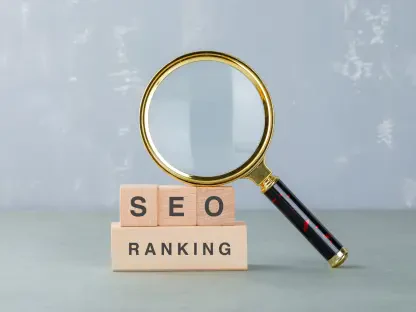Short introduction Meet Anastasia Braitsik, a global leader in SEO, content marketing, and data analytics, who has been at the forefront of navigating the evolving digital landscape. As the AI era reshapes how brands connect with consumers, Anastasia offers unparalleled insights into the shift from traditional search engine optimization to answer engine optimization (AEO). In this engaging conversation, we explore the inspiration behind innovative marketing approaches, the challenges brands face with AI-driven platforms, and how cutting-edge tools are helping companies stay visible and influential in a rapidly changing world.
What inspired you to dive into the AI-driven marketing space, and how did you recognize the need for a fresh approach in this era?
I’ve always been fascinated by how technology transforms the way brands communicate with their audiences. A few years back, while working on data-driven influencer campaigns, I noticed a significant shift in consumer behavior. People were increasingly turning to AI tools like chatbots and assistants for quick, authoritative answers instead of sifting through traditional search results. It became clear that brands were struggling to adapt to this new reality—many were invisible on these platforms despite massive marketing budgets. That realization sparked my passion for creating solutions that help brands not just keep up but thrive in the AI era by focusing on direct, impactful visibility.
Can you share some specific challenges brands face when trying to stand out on AI platforms like chatbots or search assistants?
Absolutely. One of the biggest hurdles is the lack of insight into how AI evaluates and presents brands. Unlike traditional search engines where rankings are influenced by backlinks or click-through rates, AI platforms generate a single, probability-based answer based on their understanding of a brand. If a major company isn’t part of that answer, they’re essentially invisible, no matter how much they spend on marketing. Additionally, brands often don’t know which AI systems are crawling their websites or how their content is being interpreted, creating a visibility black box that’s tough to navigate without the right tools.
How would you describe the transition from traditional SEO to answer engine optimization, or AEO, for someone new to the concept?
Think of traditional SEO as a game of getting to the top of a list—optimizing for keywords, building links, and driving clicks to rank higher on search engine results pages. AEO, on the other hand, is about being the definitive answer. With AI-driven platforms, users aren’t browsing through links; they’re getting a synthesized response directly. So, AEO focuses on ensuring a brand’s content is seen as trustworthy and authoritative by AI systems, shaping narratives so that when a user asks a question, the brand’s perspective is front and center. It’s less about volume of traffic and more about precision and influence in that one critical answer.
What are some key differences in how brands are perceived in traditional search versus AI-driven environments?
In traditional search, perception is tied to visibility through rankings and snippets—being on the first page often means you’re credible. Metrics like backlinks and user engagement heavily influence that. In an AI-driven environment, it’s a different story. AI doesn’t just list options; it curates a response based on its understanding of relevance and authority. A brand might not even be mentioned if the AI doesn’t recognize its content as the best fit for the query. This means brands need to focus on structured, factual content that AI can easily interpret and prioritize, rather than just optimizing for clicks or keywords.
How does a platform focused on AEO help brands become more visible and influential in this new landscape?
An AEO-focused platform acts like a guide through uncharted territory. It starts by demystifying how AI platforms view a brand—offering real-time insights into how products or services are described across major AI tools. Then, it identifies gaps and opportunities, helping brands craft content that aligns with what AI systems value as authoritative. Beyond visibility, it’s about controlled influence—shaping the narrative so that when a user asks a question, the brand’s voice is part of the answer. This could mean creating detailed guides or leveraging trending topics to ensure the brand is seen as a trusted source by both AI and consumers.
Can you walk us through how monitoring tools help brands understand their presence on AI platforms?
Monitoring tools are like a window into the AI world. They provide dashboards that show, in real time, how a brand, its products, or even its competitors are being described by major AI search engines and assistants. For instance, they can track which pages AI crawlers are visiting on a brand’s website, how often, and what content they’re focusing on. They also uncover the kinds of conversations users are having around a brand’s industry—revealing hot topics or hidden user needs. This data helps brands see where they stand and adjust their strategies to improve how AI interprets and presents them to users.
How can data-driven insights be turned into practical steps for marketing teams looking to optimize for AI search?
It’s all about turning raw data into a clear roadmap. For example, insights from monitoring can be used to create detailed content briefs for marketing teams, suggesting specific topics, structures, and even factual points to include so the content resonates with AI preferences. There are also templates that transform these insights into ready-to-publish pieces like blog posts or comparison guides, built on proven formats that AI tends to favor. This approach takes the guesswork out of content creation, ensuring every piece is purposeful and aligned with how AI evaluates authority, ultimately boosting a brand’s chances of being the go-to answer.
In what ways does an AEO platform improve efficiency for marketing teams, especially during large-scale campaigns or events?
Efficiency is a game-changer with AEO platforms. Traditionally, planning a big marketing event could take months of research, coordination, and manpower. With the right tools, a small team can now handle that in minutes by leveraging data and automation. For instance, insights into trending topics and user intent can quickly inform campaign themes, while automated content creation helps churn out relevant materials at scale. I’ve seen cases where a compact team planned a major product launch event almost overnight, something that would’ve taken weeks otherwise. It’s about working smarter, not harder, and letting data drive decisions at speed.
What’s an example of a brand that saw significant results from adopting AEO strategies?
I’ve worked with a fintech company that was struggling to get noticed on AI channels for one of their key products. After implementing AEO strategies, including monitoring how AI described their offerings and creating targeted content based on user intent data, their exposure on AI platforms skyrocketed—think seven times the visibility they had before. This wasn’t just about being seen; it translated into real consumer trust because their content was positioned as the authoritative answer when users asked related questions. It’s a powerful reminder of how aligning with AI preferences can create tangible impact for a brand’s reach and reputation.
What is your forecast for the future of AEO and its role in shaping brand visibility over the next few years?
I believe AEO will become the cornerstone of digital marketing as AI continues to dominate how people access information. Over the next few years, we’ll see an even sharper decline in traditional search traffic—some predict a drop of 50% or more by the end of the decade. Brands that don’t adapt to AEO will risk fading into obscurity, while those that embrace it will gain a competitive edge by owning the narrative in AI-generated answers. We’re also likely to see more sophisticated tools emerge, offering deeper personalization and predictive analytics to anticipate user needs before they even ask. It’s an exciting time, but it’s clear that AEO isn’t just a trend—it’s the future of how brands stay relevant.









